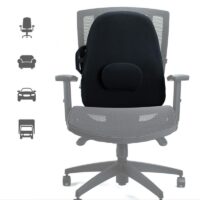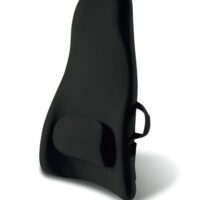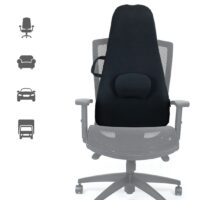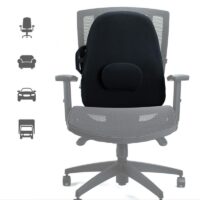Core Stability

Article by Matthew Hewitt

Core Stability
A Physiotherapist’s Guide to a Healthy Spine
Introduction
The human spine, an architectural marvel, often bears the brunt of our daily activities. Core stability plays a pivotal role in supporting this structure. As a physiotherapist, I’ve seen firsthand how core muscle strengthening can transform spinal health. This article discusses the mechanics of core stability, its importance, and the latest research in this field, to provide a comprehensive understanding for the general public.
The Lumbar Spine and Core Muscles
The lumbar spine, consisting of five vertebrae resting on the sacrum, allows for a wide range of motions. Yet, its stability heavily depends on the core muscles. These muscles are classified into two groups: Stabilisers and Movers.
Stabilisers include:
- Multifidus
- Transversus Abdominus
- Pelvic Floor
- Diaphragm
- Internal and External Obliques
Movers consist of:
- Erector Spinae
- Latissimus Dorsi
- Quadratus Lumborum
- Psoas
- Rectus Abdominus
The Role of Core Muscles
Stabilisers function as a protective box, ensuring safe load transfer and enhancing stability. Movers, meanwhile, are involved in larger, global movements. However, traditional core training often neglects the deeper stabilisers, focusing instead on the more visible movers.
Activating Core Muscles Effectively
To activate deep core muscles, maintaining the natural arch of the lower back and proper pelvic tilt is crucial. Functional exercises, such as squats, deadlifts, and single-arm carries, offer a comprehensive approach to core training, mimicking everyday activities. Core exercises upon unstable surface such as physio balls or Bosu’s etc can intensify your stability muscles due to natural demand required to maintain your balance.

Recent Research and Core Stability
Recent studies underscore the benefits of core stability retraining, especially for individuals with low back pain. For instance, those engaging in ultrasound-guided exercise programs report a significant reduction in re-injury rates.
The Underestimated Pelvic Floor and Diaphragm
The pelvic floor and diaphragm are vital in maintaining intra-abdominal pressure, crucial for spine stabilisation. Dysfunctions in these areas can lead to various issues, highlighting the need for guided exercises.
What to Do? Seeking Professional Advice
If you’re experiencing back pain or want to improve your core stability, it’s wise to consult a physiotherapist. A professional can tailor an exercise program to your specific needs, ensuring you engage the correct muscles and techniques.
Conclusion
Core stability is more than just aesthetic; it’s about maintaining a healthy spine and enhancing overall wellbeing. By understanding and working on our core muscles, we can significantly improve our spine health and quality of life.
For further insights and tailored exercise programs, explore PhysioWorks, which offers a wealth of information and guidance from experienced physiotherapists.
Rochedale - Call 38410277
Book Online: RochedaleSalisbury - Call 32751044
Book Online: SalisburySandgate - Call 32691122
Book Online: SandgateWhat Causes Lower Back Pain?
Introduction
Lower back pain is a widespread issue in Australia, stemming from diverse conditions. As physiotherapists, we often encounter various causes of this pain. This guide aims to shed light on these causes and provide valuable insights for effective management.
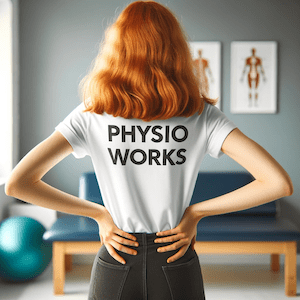

Muscle-Related Injuries
Muscle injuries are a predominant cause of lower back pain, including:
- Back Cramps and Muscle Pain: Typically resulting from overuse or strain.
- Core Stability Deficiency: Weak core muscles can lead to increased back strain.
- DOMS (Delayed Onset Muscle Soreness): Soreness affecting back muscles post-exercise.
Recent research underscores the importance of regular exercise and core strengthening in preventing these injuries.
Bone-Related Injuries
Bone health is crucial in lower back pain, encompassing conditions like:
- Spondylosis: Degenerative spine conditions.
- Spondylolysis or Stress Fracture: Common in athletes, such as cricket bowlers.
- Spondylolisthesis: Occurs when a vertebra slips over another.
- Osteoporosis: Causes bones to weaken, increasing fracture risk. Advancements in bone density scanning have improved early detection and management.
- Scheuermann’s Disease: Affects spinal bone growth in teenagers.
- Scoliosis: An abnormal curvature of the spine causing pain.
- Spinal Stenosis: A narrowing of the spinal canal leading to nerve compression.
Disc-Related Injuries
Spinal discs are vital for spinal health:
- Bulging and Disc Protrusions: These discs protrude or "slip" and can press on nerves.
- Herniated Disc: A more severe form of disc protrusion.
- Degenerative Disc Disease: Age-related disc wear and tear.
Minimally invasive surgical techniques have transformed the treatment of severe disc-related injuries where physiotherapy and other non-operative options fail to improve.
Back Joint Injuries
- Facet Joint Pain: Arises from arthritis or stress on these spinal joints.
Nerve-Related Injuries
Nerve issues can lead to:
- Nerve Pain and Pinched Nerves: Caused by spinal nerve compression from disc bulging or arthritic changes.
- Sciatica: Irritation of the sciatic nerve.
Physiotherapy and newer medications have been effective in managing these conditions. Some will require injection therapies or surgery.
Pelvis-Related Injuries
Pelvic issues also contribute to lower back pain:
- Sacroiliac Joint Pain: Involving joints connecting the spine to the pelvis.
- Piriformis Syndrome: Where the piriformis muscle irritates the sciatic nerve.
Pregnancy-Related Pain
- Pregnancy Back Pain: Often due to increased back strain during pregnancy. Prenatal physiotherapy programs are beneficial.
Systemic Diseases
Systemic diseases like Ankylosing Spondylitis, Fibromyalgia and Rheumatoid Arthritis can cause back pain.
Recent Research and Advancements
Current research emphasises a holistic approach to treating lower back pain. Techniques like yoga and Pilates, alongside traditional physiotherapy, and conservatively progressed gym programs show significant relief. The role of diet in managing weight and inflammation is increasingly recognised.
Best Treatments for Lower Back Pain
Treatment varies but often includes:
- Physiotherapy
- Pain management
- Strength and flexibility exercise programs
- Ergonomic adjustments
- Surgical interventions for severe cases
Conclusion
Lower back pain is a significant health concern in Australia. Understanding its causes and seeking professional physiotherapy advice can greatly improve life quality. Remember, early intervention is key for an effective recovery.
What to Do?
If you're experiencing lower back pain, it's vital to consult a physiotherapist or doctor. They can provide an assessment and customised treatment plan based on your specific condition.
Rochedale - Call 38410277
Book Online: RochedaleSalisbury - Call 32751044
Book Online: SalisburySandgate - Call 32691122
Book Online: SandgateArticle by John Miller
Do Core Exercises Alleviate Lower Back Pain?
Lower back pain affects millions worldwide, and recent research highlights the significance of core exercises in managing this common ailment. Let's explore how core stability training can be a game changer.


What's Your Core Stability?
Your lower back, a region prone to instability, comprises five vertebrae with remarkable flexibility but limited bone support. The deep core muscles are pivotal in supporting and manoeuvring your lower back and pelvis. They're designed for round-the-clock operation, ensuring spinal stability.
The Link Between Core Muscles and Back Pain
Research reveals a direct link between back pain and impaired core muscle functionality. The Transversus Abdominis (TA), a key muscle, often shuts down with lower back pain. This shutdown is universal among sufferers. Alarmingly, the TA doesn't automatically reactivate post-recovery, increasing vulnerability to further injuries.
Read more: Deep Core Stability Muscles
Why Core Stability Matters
Activating and strengthening your core muscles offers more than just back support. It enhances overall athletic performance, including speed, agility, and strength. Core stability exercises are pivotal in not only preventing but also diminishing existing back pain.
Seeking Professional Advice
If you're experiencing lower back pain, consulting a physiotherapist is crucial. They can guide you through tailored exercises, ensuring you engage the right muscles effectively. Visit PhysioWorks for more information and resources.
Conclusion
Incorporating core stability exercises into your routine can significantly impact your lower back health. Remember, prevention is better than cure, and your physiotherapist can guide you on this journey.
What to Do?
Contact your local PhysioWorks physiotherapist for a personalised core stability programme. They can offer professional advice and support tailored to your needs.










































